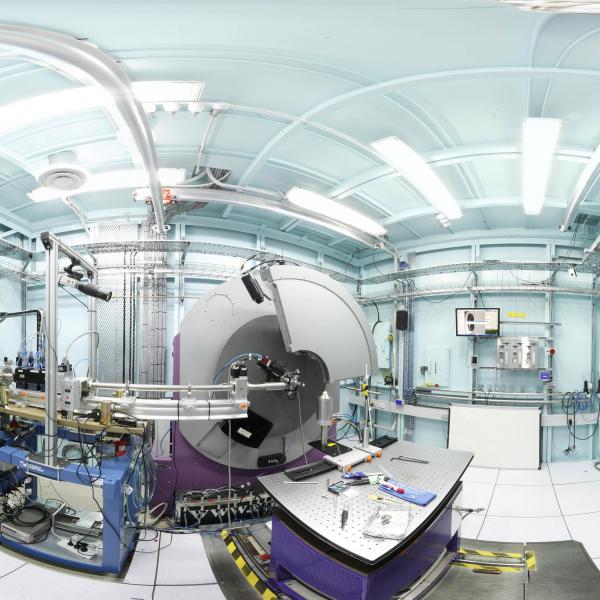
Key Points
-
Newly funded research will develop new materials and better systems for efficient hydrogen storage
-
The work is expected to progress Australia's move towards a hydrogen economy
-
ANSTO has significant expertise and infrastructure to support the development of new hydrogen materials and delivery systems
ANSTO is collaborating on a project funded with an Australian Research Council linkage grant that will develop new materials and better systems for efficiently storing hydrogen gas.
Hydrogen production and storage has been identified by the Australian Government as a strategic priority within the energy sector but one of the key technological challenges in this area its safe and efficient storage.
Research led by Prof Cameron Kepert and associates at the University of Sydney and A/Prof and ARC Future Fellow Suzanne Neville at UNSW is based on an interdisciplinary approach that targets the synthesis and detailed characterisation of two classes of molecular framework materials particularly well suited for the efficient storage and delivery of hydrogen gas.
Importantly, the linkage grant funds the development of an advanced hydrogen delivery canister by industry partner Rux Energy Pty Ltd.
Prof Vanessa Peterson, leader of the Energy Materials Research Project at ANSTO who has worked extensively in characterising materials for energy production and storage for over a decade using neutron scattering instruments, will contribute to the project as a partner investigator.
“This project is really about the realisation of the hydrogen economy in Australia with the development of safe storage and delivery systems,” said Peterson.
“The team is really ideal for this project, particularly regarding the chemical engineering of high- performance materials for these systems, by understanding what is needed and then tuning materials structure for maximum efficiency.”
“It is a great team that has made significant breakthroughs using experimental and theoretical approaches to identify champion materials for hydrogen storage,” she said.
The new systems will be based on two families of porous framework materials, leading solid adsorbents that allow hydrogen to be stored within the material pores by adsorption processes.
These two material classes, Prussian blue analogues and carboxylate-based metal organic frameworks materials, have been studied by Peterson and colleagues extensively, and have properties that make them efficient at adsorbing hydrogen gas.
Instrumentation and expertise at the Australian Centre for Neutron Scattering and Australian Synchrotron will contribute to the characterisation of these new materials, including assessments of hydrogen binding within the frameworks.
The investigators plan to synthesise and develop highly porous new materials based on these framework materials to capture hydrogen gas and use them to boost storage capacity and function of storage cylinders.
The materials can be used to produce low-cost materials for mid- to large-scale hydrogen storage applications that include stationary storage, as well as heavy transport and distribution technologies.
The investigators plan to scale-up the synthesis of optimised materials and develop prototype systems for real-world testing of performance at variable temperature, as well as the mechanical durability of the system in high pressure cycling tests.
Current hydrogen storage methods are inefficient and expensive due to the need for carbon-fibre reinforced tanks.
“These carbon-fibre reinforced tanks have limited storage capacity. By incorporating solid, porous materials inside the canisters, we can increase the storage capacity and system efficiency,” explained Peterson. The prototype fuel cell canister being developed by RUX energy will be loaded with porous materials framework pellets.
Peterson will coordinate a range of investigations using multiple instruments and equipment at the Australian Centre for Neutron Scattering, the National Deuteration Facility, and the Australian Synchrotron. Testing of the system will be carried out using specialist equipment developed at ANSTO in prior work, including high-pressure testing with the prototype cylinders.
“We can assess the uptake of hydrogen under high pressure and other conditions because of equipment that was purposely built for these tasks,” said Peterson.
“It is not extreme high pressure, but it is at a level that is not available in the university setting.”
The project will create major national economic benefits through local production opportunities and training early career researchers in state-of-the-art analytical techniques. The outcome of the research is expected to generate significant advances in understanding how the uptake of hydrogen gas relates to the chemical and physical attributes of porous molecular systems.
After first working on hydrogen capture studies more than 16 years ago in the United States, Peterson is keen to engage in this research in one of her favourite areas of investigation and one in which she has excelled.






